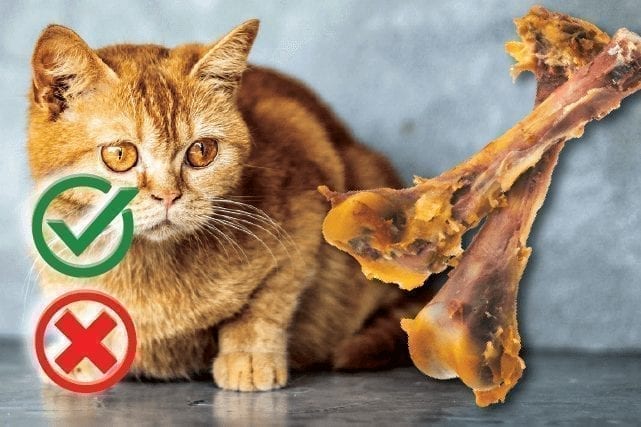Can cats eat chicken bones? Cats need the minerals that are contained in animal bones, such as chicken bones. Therefore, cats can eat chicken bones as part of their healthful diet.
Chewing a bone can also be an exercise for their teeth: chewing the bones helps to clean the teeth. In addition, by doing so, the gums are massaged and the plaque is removed.
If you are wondering what kind of bones you can give your cat, you should speak to your vet.
Can cats eat chicken bones that have been cooked?
You can safely feed your cat bones, but you shouldn’t give them cooked bones. Cooked bones can chip and injure the cat’s stomach, causing intestinal damage.
Bones offer nutritional value for your pets. Uncooked bones contain calcium phosphate. Calcium and phosphorus are important in your pet’s diet. This is true for most cat breeds.
You should only give your cat edible bones, usually chicken wings and necks. You can also grind them as they are easy to crush. Even if you grind them, they will continue to have trace minerals, calcium, and phosphorus.
Calcium is important for the health of your cats. Symptoms of calcium deficiency include stiffness, weakness, muscle tremors, and increased sensitivity to sound and touch. Arthritis, fur problems, and broken bones are other signs that your cat is not consuming enough calcium.
Veterinarians recommend giving your cats the right amount of calcium through a BARF raw food diet. A good example would be chicken bones.
Cats are carnivores by nature. Feral cats survive by hunting, eating their prey. But this doesn’t apply to domestic cats. Despite this, something about their behavior remains: they continue to have the ability to hunt and eat their own prey. This means that their stomachs can easily handle a raw food diet.
Will chicken bones chip cats’ teeth?
Chicken bones are safe for your cat, but that doesn’t mean you can safely feed them raw chicken bones. If your cats are heavy chewers, you should first ask your vet what type of bones they are best to prevent chipping or fracturing their teeth.
Chicken bones contain marrow which can add calories to your cats’ daily calorie intake. You should therefore not feed your cats with chicken bones that contain marrow. This is especially true if your cat has pancreatitis.
In addition, the marrow in the bones can cause diarrhea, especially in stomach sensitive cats. If you can’t help but feed your cat chicken bones that contain marrow, you should empty them of marrow before feeding them to your cat. Do this until your cat’s gastrointestinal tract has adapted to the fat content of the marrow.
However, if your cats have weight problems, you should avoid giving them marrow bones altogether.
Importance of calcium for cat health
If you are not feeding your cat with bones, you can give them calcium supplements that will ensure the necessary intake. It is not the best solution. Veterinarians continue to recommend giving real bones because they contain more calcium than supplements.
Furthermore, trace minerals in cartilage, which is connected to the bone, can add to the nutritional values that uncooked bones can give.
When you feed your cats chicken bones, they need to be fresh and warm. This is because most cats don’t like to eat cold foods. Then, thaw the chicken bones by placing them in a clear sealed bag and place the bag with the bones in a bowl of warm water for a few minutes.
You don’t have to put the bag in a bowl of hot water as it can cook the bones.
It is also important to remember not to defrost chicken bones in the microwave. Defrosting it in this way can cook the bones making them more fragile and can thus injure the stomach of cats.
Dangerous bacteria
One of the risks of feeding cats chicken bones is that they may contain dangerous bacteria. Harmful organisms can be found in raw food, including in chicken bones.
So, if your not sure that you will be giving chicken bones to your cat immediately, leave them in the freezer. You should take them out for a short period of time to prevent bacteria from growing.
This article is purely informative, at Shelterapet we do not have the right to prescribe veterinary treatments or make any type of diagnosis. We encourage you to take your pet to the vet in case It has any kind of discomfort.



